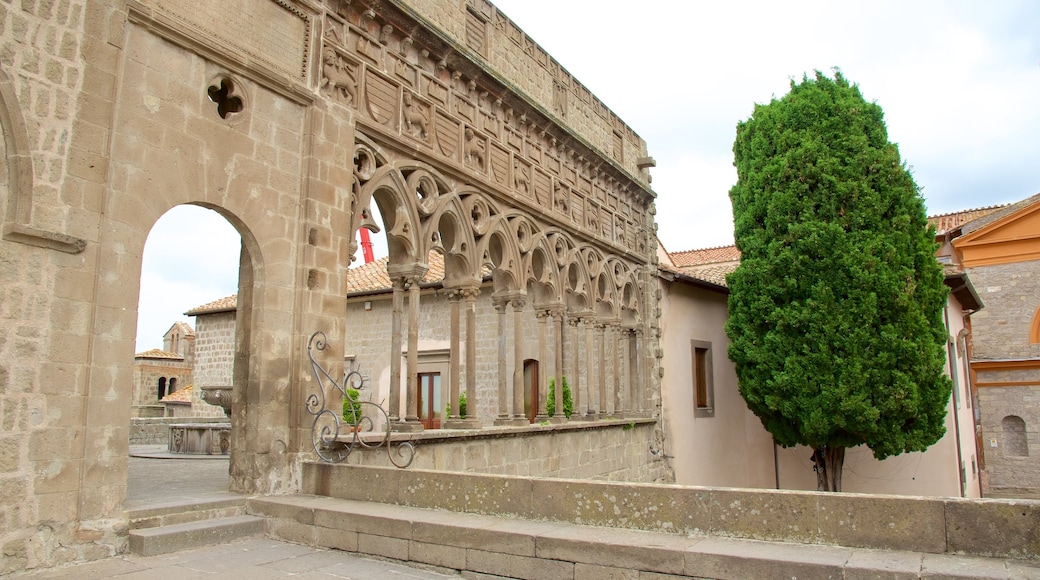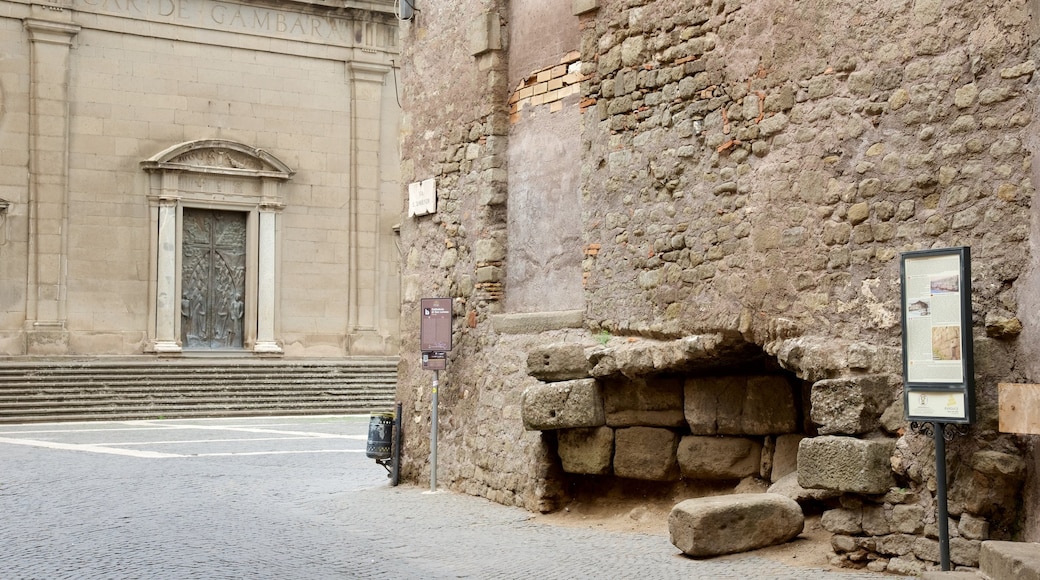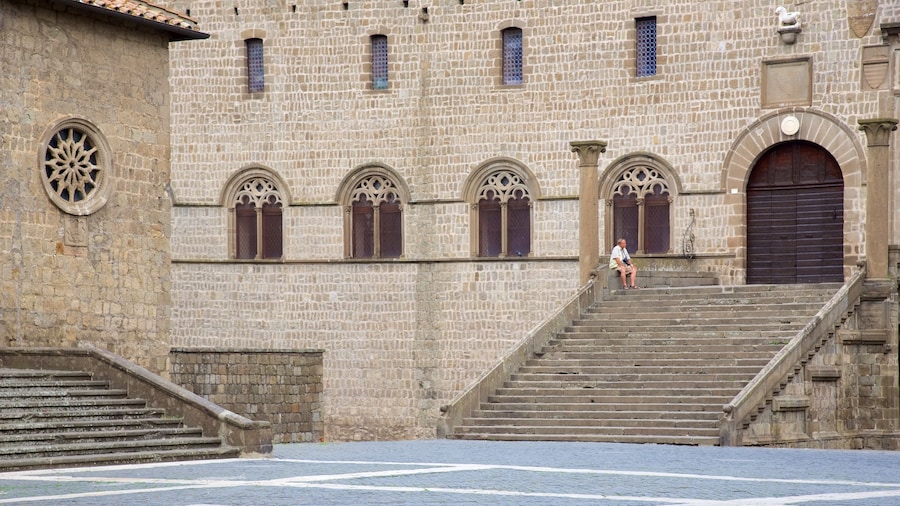Viterbo Cathedral (Cattedrale di San Lorenzo) is an architecturally impressive church that looms over the hilltop Piazza San Lorenzo. Established in the 1100s, legend states that the cathedral stands on the site of an ancient Etruscan temple of Hercules. It was reconstructed in the 16th century and restored after bomb damage during World War II. Today, Viterbo Cathedral forms part of a medieval complex, which includes a papal palace, loggia and museum.
Observe the cathedral’s humble and sparsely ornamented façade, a result of the 16th-century reconstruction commissioned by Cardinal Gian Francesco Gambara. The most notable features are the central rose window and two circular windows set either side of the main doorway. To the left of the façade is a soaring bell tower. Its upper section showcases Gothic and Tuscan architectural influences and is crowned by a pyramid.
Make your way inside to discover a harmonious and monumental interior, characterized by three naves separated by rows of column-supported arches. Pay attention to the medieval capitals that depict sphinxes and adorn the columns. Another artistic aspect of the interior is the Cosmati-style tiled floor made using marble, among other stones. Look for a fragment of a 14th-century fresco, an intricately carved baptismal font by Francesco da Ancona and paintings of scenes from the life of St. Lawrence.
Back outside, take some time to appreciate the additional landmarks located around Piazza San Lorenzo. Browse displays of the archaeological treasures, reliquaries and sacred art at the Cathedral Hill Museum. On the square’s north side is the Palazzo dei Papi, erected in the 1200s as a residence for popes that sought refuge in Viterbo. Admire the arched loggia and lion-decorated fountain set to the right of the staircase, which leads to the palace.
The cathedral sits to the west of Viterbo’s historic center. It’s about a 10-minute walk from important city landmarks, including Piazza del Plebiscito and Via di San Pellegrino.
Viterbo Cathedral is open every day except Monday. Guided tours of the cathedral are available for a fee, which also includes entrance to the museum.





